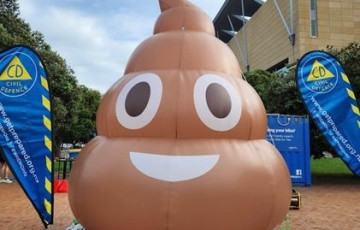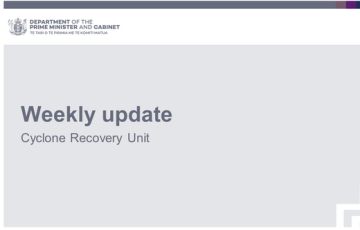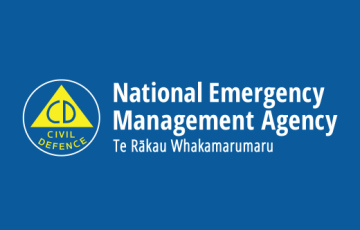Weekly cyclone update - 6 April 2023
Update from the Cyclone Recovery Unit
The Government, through the Cyclone Taskforce, is continuing to build a picture of high and low-risk areas following Cyclone Gabrielle and the January floods.
The Taskforce is working with insurance companies and councils to assess the risk status of areas affected by the weather events. A consolidation of insurance and council risk assessments for severely affected areas is being developed. They will provide a factual basis for further discussion with affected communities. This isn’t a property-by-property view, but more at a suburb or area level.
Once these risk assessments have been completed, the next steps will be shared with communities and affected individuals.
We want to stress that no decisions have been made yet on which areas are considered high risk and should not be rebuilt upon. It is vital to first get an accurate picture and as many facts as possible, and to engage with communities.
Solutions, options and decisions will be complex and unique for each community and potentially for each property. Regional groups, councils and central government will work at both a community level and with individuals. The Government, via the Taskforce, expects to have preliminary information to share by the end of this month.
It is useful to clarify some issues that may be causing uncertainty.
First, having a red or yellow sticker on your property does not necessarily mean a location will be deemed high-risk or that the land can’t be rebuilt upon. These are assessments of immediate safety risk at the location, not future risk of flooding or viability of the land.
Second, there are a range of potential responses to the assessments. Managed retreat (i.e., not rebuilding in the area) is one possibility, but so are other resilience measures, including building or enhancing stopbanks, changing the structure or location of buildings or building in a different way.
Third, no decisions on properties or communities will be made without comprehensive consultation and engagement with communities, mana whenua and other stakeholders on both the risk assessment, and the options and pathways for individuals in high-risk areas.
Communities can be assured that the Government is moving as quickly as we can. We are committed to getting this right for the people and businesses involved. The process will be careful and thorough and is always done with the needs and feedback of local communities in mind.
The Cyclone Recovery Unit is working alongside the Taskforce to support the recovery of affected regions and is responsible for leading and coordinating the Government’s recovery work programme.
Government support to date:
- An initial $250 million for Waka Kotahi and local councils to assess and fix roads
- $74 million for affected farmers and growers to clean up and re-establish their businesses
- $50 million for businesses with immediate costs and clean-up – to be distributed by local delivery partners in the affected regions
- $5 million to Mayoral Relief Funds
- More than $28.4 million in Civil Defence Payments
- Inquiry announced into forestry slash and land use after Cyclone Gabrielle
- A new Recovery Visa created to help bring in additional specialist workers
- Temporary Accommodation Service activated in affected regions
- Cyclone Gabrielle Appeal Fund Launched along with a special Lotto Draw on Saturday 18 March
- $15 million short-term relief package to support Māori communities
- A further $17.5 million to support communities and community providers
- $15 million for councils to remove rubbish
- Cyclone Taskforce set up, chaired by Sir Brian Roche, to align locally led recovery plans with Government and private sector.
Published: Apr 6, 2023, 2:59 PM



